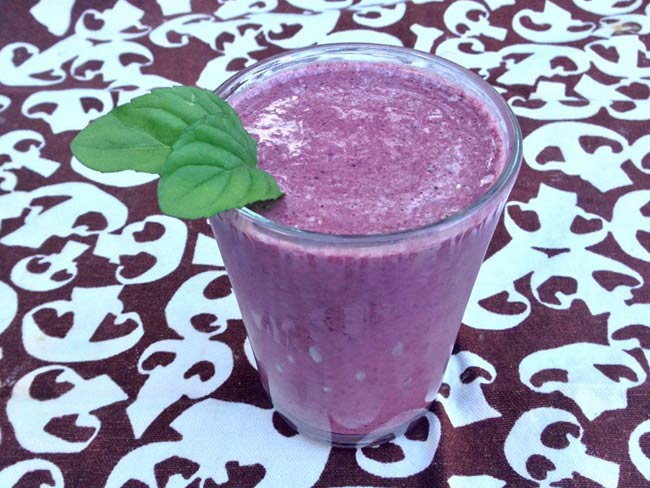Smoothies 101: A prescription for veggies
Give smoothies a shot to get vegetables and healthy nutrients into your diet.
Smoothies are a great way to add vegetables and other healthy foods to your diet, especially for pickier eaters. If you just want to try smoothies out, start with the recipe at the bottom of the page.
If you decide that smoothies are going to become a lifestyle, stock your freezer and pantry with some key ingredients.
Bananas: Peel and freeze soft bananas. Bananas are a great base for smoothies — their natural sweetness will counter the sourest berry or brighten greens like spinach.
Coconut milk: Freeze coconut milk in an ice cube tray, then transfer to a storage container in the freezer. The cubes provide a delicious tropical taste. They can be a nice substitute for dairy, adding richness for those who cannot or do not eat dairy.
Ginger: Peel and chop fresh ginger into ½ to 1-inch pieces and store in a glass jar. Ginger has anti-inflammatory properties and gives smoothies a delicious kick.
Lemons: Juice a bag of lemons and freeze in an ice cube tray. Once frozen, transfer into a storage container and store in the freezer. A little bit of the acidic flavor of lemon or lime can make the flavor of a smoothie pop.
Consider stocking other healthy ingredients to add more nutrition and extra flavor:
Walnuts are a great source of Omega-3 fatty acids. Ground flax seed also provide Omega-3s and fiber. Cinnamon helps control blood sugar. Other popular choices include chia seeds, fresh mint, and basil.
Make your smoothie
Smoothie-making is an art and not a science. You can play around and experiment every day, and it’s hard to go wrong. To make your smoothie, add something from each of the following categories:
Base ingredients: Consider adding ginger, lemon, banana, chia seeds, ground flax seeds, cinnamon, and walnuts to most smoothies, depending on your taste.
Fruits: Use whatever fresh fruit is in your fruit basket: Apples, pears, oranges, grapes, etc. Frozen fruits are great because they add texture and are easy to keep around. Blueberries, strawberries or blackberries, and tropical fruits like pineapple and mangos work well.
Vegetables: Add a handful of fresh greens, such as spinach, arugula, kale, or power greens. Or just use some frozen spinach. Other ideas include cucumbers, carrots, beets, canned pumpkin, celery, or parsley.
Liquid: Add a liquid. Consider adding some dairy to give your smoothies a satisfying richness. Use the amount needed to help the smoothie blend easily and achieve your desired texture. Use coconut milk cubes if you like tropical flavors or are avoiding dairy.
You can also add organic yogurt to get probiotics in your diet. If you want to add some sweetener, you can use fruit juice, honey, or agave. You can also add frozen bananas.
Servings: 2
Prep time: 10 minutes
Ingredients: Mixed berry and beet smoothie
- 1 cup mixed frozen berries or blueberries
- 2 teaspoons chia seeds
- 2 teaspoons ground flax seeds
- 1/4 teaspoon ground cinnamon
- 1/2 tablespoon walnuts
- 1/3 cup diced beet, either raw, canned, or roasted
- Handful fresh or 1 to 2 tablespoons frozen spinach
- 1/4 cup plain low-fat yogurt or low-fat coconut milk
- 1 frozen banana or 1 teaspoon honey or agave syrup
Directions
- Place all of the ingredients in a blender and blend for 1 full minute.
- Pour into a glass and enjoy.
Nutrition information (per serving)
- Calories: 372
- Total fat: 14 g
- Saturated fat: 1.5 g
- Trans fat: 0 g
- Cholesterol: 0 mg
- Sodium: 78 mg
- Total carbohydrate: 58 g
- Dietary fiber: 12 g
- Total sugars: 9 g
- Protein: 10 g
